Home > Asia > Japan > 14-Days Highlights of Japan

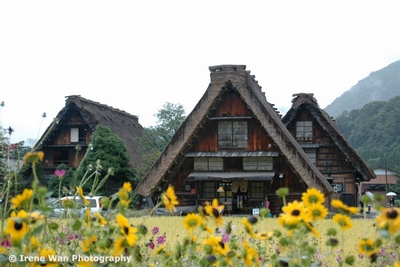
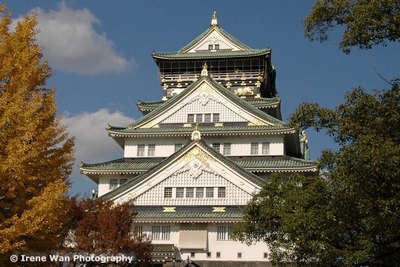
14-DAYS HIGHLIGHTS OF JAPAN
Trips Highlights:
- Get an introduction to Tokyo.
- Sip sake in Takayama
- Explore Hiroshima's highlights
- Experience tea culture in Kyoto
- See Osaka's mix of old and new.
Itinerary in details:
| Day 01 | Tokyo Arrival 東京 |
Upon arrival to Tokyo’s airport, our representative will be waiting to assist with sorting the appropriate transportation into the city (boarding the right train or selecting the correct shuttle bus).
The remainder of the day is free at leisure to explore Tokyo independently.
Overnight in Tokyo
Distance and journey time (approximation):
Narita International Airport (NRT) to Central Tokyo: 1.5 h
Haneda International Airport (HND) to Central Tokyo: 50 m
| Day 02 | Tokyo 東京 |
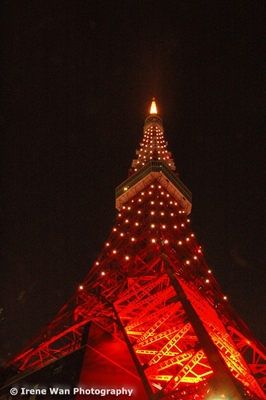 This morning, meet up with the guide at the hotel and head to Hamarikyu, a Japanese garden that once served as a private villa of a powerful feudal lord during the Edo period. Its wide collection of seasonal flowers makes it one of the most visited gardens in Tokyo, but what makes it more attractive is its teahouse called Nakajima-no-Ochaya.
This morning, meet up with the guide at the hotel and head to Hamarikyu, a Japanese garden that once served as a private villa of a powerful feudal lord during the Edo period. Its wide collection of seasonal flowers makes it one of the most visited gardens in Tokyo, but what makes it more attractive is its teahouse called Nakajima-no-Ochaya.
Have a break in the teahouse and enjoy a cup of freshly made green tea while the guide shares interesting facts about chado (tea ceremony).
From the park, take the scenic river cruise to Asakusa, a part of Tokyo’s shitamachi or old town. Asakusa is the city’s oldest Geisha district and also home to Senso-ji, Tokyo’s oldest Buddhist temple. The streets around Senso-ji feature many traditional shops and are a delight to wander through.
The tour ends with a visit to Meiji Jingu, Tokyo’s most famous shrine dedicated to Emperor Meiji and a popular venue for traditional Shinto weddings.
The shrine is also home to around 120,000 trees, making one forget that just outside its grounds are two of the city’s popular shopping districts, Harajuku and Omotesando.
Note: The order of this itinerary may change depending on the location of your hotel.
Overnight in Tokyo
Time:
Start (guided tour): 09:00
Duration: 8 h
*including pick-up/drop-off and transit time
| Day 03 | Tokyo, Optional Day Trip to Kamakura or Nikko 東京 (鎌倉/日光) |
Today is a self-guided day.
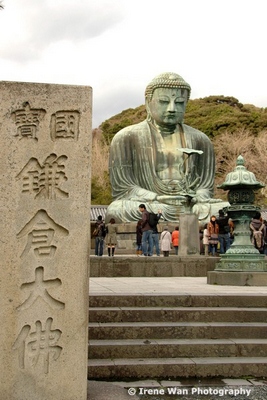 Suggested Self-Guided Itinerary:
Suggested Self-Guided Itinerary:
Enjoy a full day of exploring this amazing city. Visit the electronics district of Akihabara or discover some of Tokyo’s world-class museums and art galleries.
Alternatively, use the included Japan Rail Pass for a day trip outside Tokyo to one of the following:
Kamakura
One of Japan’s former capitals, Kamakura is a delightful seaside town home to many ancient shrines, temples, and other structures like the Daibutsu, a giant bronze Buddha that stands at 13-meter tall.
Distance and journey time (approximation):
Tokyo Station to Kamakura Station: 50 min
Nikko
Located north of Tokyo, Nikko is a city that lies in the mountainous area of Tochigi Prefecture well-known for its national park. Some of the popular places in the park include the Toshogu Shrine complex and the Tamozawa Imperial Villa.
Note: Toshogu Shrine is currently undergoing partial renovations.
Distance and journey time (approximation):
Tokyo Station to Nikko Station: 2 h
Overnight in Tokyo.
| Day 04 | Tokyo – Takayama 東京 ~ 高山 |
Today is a self-guided day.
 Get ready for the journey to Takayama, a small town nestled high in the Hida Alpine region of Gifu Prefecture.
Get ready for the journey to Takayama, a small town nestled high in the Hida Alpine region of Gifu Prefecture.
The first leg of the trip will be on a bullet train that can reach speeds of up to 260 kph. The next leg is on the limited express train Wide View, which offers one of the most scenic train journeys in Japan.
Suggested Self-Guided Itinerary:
We recommend strolling in Takayama’s shitamachi, where the streets are lined with century-old merchants’ homes and sake breweries. Stop by one of the breweries for a taste of the local drop or queue for the famous Hida beef sushi in one of the special food stalls.
In Takayama, experience a stay in a ryokan, the traditional Japanese-style inn furnished with low tables and chairs, sliding shoji doors, and tatami flooring.
Overnight in Takayama
Distance and journey time (approximation):
Tokyo Station to Takayama Station: 4 h
| Day 05 | Takayama 高山 |
Today is a self-guided day.
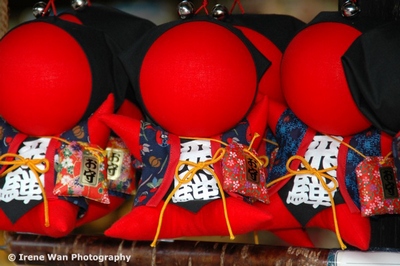 Optional Tour: Food & Culture Walk and Hida Cycling Tour
Optional Tour: Food & Culture Walk and Hida Cycling Tour
Explore some of the food shops in Takayama with a knowledgeable guide, learning about the town’s colorful history and familiarizing the taste buds with some local delicacies. The walking tour includes visits to a tofu seller, a rakugan shop (traditional Japanese candies) and even a sake brewery (some stores may close during certain days). Food and sake tastings are also included.
Follow up with a cycling tour in Hida Furukawa, a small, quiet farm village in Gifu Prefecture located 15 minutes away from Takayama.
With an impressive view of the surrounding Japanese Alps, it is also well-known for the traditional architectural design of its old buildings and machiya-style houses built by experienced craftsmen centuries ago.
Like other towns in the Hida Region, Hida Furukawa is also famous for its high-quality sake (rice wine) brought about by its rich rice fields, clean waters and favorable weather.
Today, get a chance to explore the streets and outskirts of Hida Furukawa on a bicycle together with a local guide. Spend half a day cycling around this mountain village, passing by rice paddies and old houses, and have a closer look at the lifestyle in this rural region.
Time:
Start: 09:30
Duration: 6.5-7.5 h
Availability:
April to October: 09:30 – 17:00
November to December: 09:30 – 16:00
Note: Tour dates, especially right before and after winter, may be altered depending on a number of factors (i.e. snow, weather, sunset times, etc.).
Overnight in Takayama
| Day 06 | Takayama – Kanazawa, Day Trip in Shirakawago 高山 ~ 金澤 (白川鄉) |
Today is a self-guided day.
 This morning, catch the bus to Shirakawago, a UNESCO World Heritage Site famous for its gassho-zukuri farmhouses.
This morning, catch the bus to Shirakawago, a UNESCO World Heritage Site famous for its gassho-zukuri farmhouses.
Gassho-zukuri means "constructed like hands in prayer," which is represented through the farmhouses' steep thatched roofs. This architectural style developed over many generations – the roofs were constructed without any nails and are intricately designed to withstand large amounts of snow.
These houses are private homes of the locals, but some are open to the public, such as Wada House, a legacy left behind by the Wada Family who used to be the richest family and village leader in Ogimachi.
In the afternoon, continue by bus to Kanazawa, the castle town that thrived as the center for culture and the arts in the 17th century.
Overnight in Kanazawa
Distance and journey time (approximation):
Takayama Bus Terminal to Shirakawago Bus Stop: 50 min
Shirakawago Bus Stop to Kanazawa Eki-mae Bus Terminal: 75 min
| Day 07 | Kanazawa 金澤 |
Today is a self-guided day.
Suggested Self-Guided Itinerary:
Start with the pristine Kenroku-en Garden, which is ranked as one of Japan’s top three gardens. Here you will find the oldest water fountain in the country, a couple of teahouses, and a large villa that used to be the retirement home of one of the richest clans in Kanazawa.
Adjacent to the garden is Kanazawa Castle, easily accessed through the Ishikawa-mon Gate, a designated Important National Cultural Asset.
Lunch can be in Omicho Market, known throughout Japan for its fresh seafood and fine sushi.
Finally, head across town to the old Samurai district of Kanazawa and visit Nomura House, a restored residence of a high ranked samurai family. Freshly made green tea can be enjoyed on the second floor while viewing the small Japanese garden below.
Overnight in Kanazawa.
| Day 08 | Kanazawa – Hiroshima 金澤 ~ 廣島 |
Today is a self-guided day.
This morning is at leisure until the departure for Hiroshima. After the long train journey, it’s time to check into the hotel and rest or start exploring this amazing city.
Overnight in Hiroshima
Distance and journey time (approximation):
Kanazawa Station to Hiroshima Station: 4.5 h
| Day 09 | Hiroshima and Miyajima 廣島 ~ 宮島 |
Today is a self-guided day.
Suggested Self-Guided Itinerary:
From mainland Hiroshima, a short ferry ride leads to Miyajima, a small sacred island located in the Seto Inland Sea. Explore the island and sample some local delicacies like oysters, saltwater eel, and maple leaf-shaped cakes.
Start with Itsukushima Shrine, declared as one of Japan’s three most beautiful views. The shrine is designed in a pier-like structure and dates back to the 6th century. Its huge vermillion o-torii gate seems to be floating in the water during high tide.
Walk towards the mountain to visit Daisho-in, the most visited Buddhist temple on the island. Along the stairs is a row of spinning sutras that lead up to the main hall. It is believed that anyone who spins these sutras will be blessed.
Early in the afternoon head back to Hiroshima to visit Peace Memorial Park and Museum. There is also the heart-rending A-Bomb Dome and the Children’s Peace Monument.
Note: The Peace Memorial Museum is currently undergoing renovations and the east building will be closed until 2017.
Overnight in Hiroshima.
| Day 10 | Hiroshima – Kyoto 廣島 ~ 京都 |
Today is a self-guided day.
Today’s destination is Kyoto, the reigning cultural capital of Japan, home to 2,000 shrines and temples with 17 UNESCO World Heritage Sites.
Overnight in Kyoto
Distance and journey time (approximation):
Hiroshima Station to Kyoto Station: 2 h
| Day 11 | Kyoto 京都 |
Today is a self-guided day.
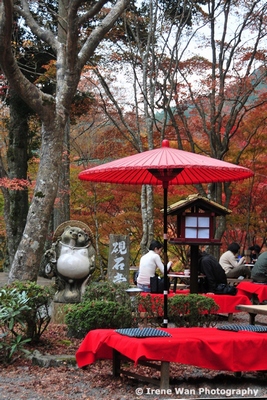 Today’s tour starts with a visit to Nijo Castle, an ornamental castle that was originally built to serve as the private villa of a powerful feudal lord. The main building was completed in early 1600s and has since been known for its Momoyama-style architecture, decorated sliding doors, and “chirping nightingale” floors.
Today’s tour starts with a visit to Nijo Castle, an ornamental castle that was originally built to serve as the private villa of a powerful feudal lord. The main building was completed in early 1600s and has since been known for its Momoyama-style architecture, decorated sliding doors, and “chirping nightingale” floors.
Next in the list is the serene Ryoan-ji Temple, which is famous for its well-maintained rock garden and known to be the Myoshinji School of the Rinzai Buddhist sect.
Just a short distance from Ryoan-ji is the stunning golden pavilion collectively known as Kinkaku-ji Temple. The temple grounds are relatively smaller than that of most temples and shrines in Kyoto but what is undoubtedly impressive is the pavilion that is completely covered in handmade gold leaves.
A visit to Kiyomizu-dera Temple follows later in the day. The view from the 13-meter high building is indeed breathtaking and the fact that this veranda was built without using any nails or joiners is quite unbelievable.
The tour ends with a stroll along the busy streets of Higashiyama district, a collection of narrow alleyways lined with local stores, souvenir shops, small eateries, and even pottery centers.
Note: Kiyomizu-dera Temple is currently undergoing partial renovations.
Overnight in Kyoto
Time:
Start (guided tour): 09:00
Duration: 8 h
*including pick-up/drop-off and transit times
| Day 12 | Kyoto, Cultural Experience, Optional Afternoon Trip to Nara 京都 |
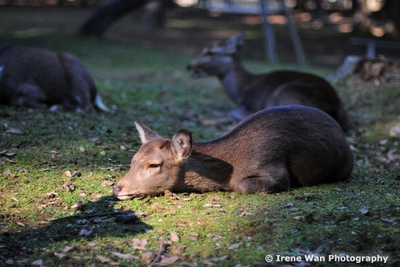 This half-day tour offers a unique and unforgettable chance to learn about Japanese culture in a machiya – a traditional Kyoto-style wooden townhouse which has been beautifully restored.
This half-day tour offers a unique and unforgettable chance to learn about Japanese culture in a machiya – a traditional Kyoto-style wooden townhouse which has been beautifully restored.
First, embark on a short tour of the house and obtain some insight into its architecture before being able to try on a traditional kimono, the iconic Japanese garment.
While in a kimono, take part in a tea ceremony led by a tea master, a quintessential part of Japanese culture. This allows some insight into the unique aspect of the Japanese tea culture, from making the tea to the movements involved in serving it.
This cultural experience ends with a choice of two options:
Option A:
A walk through the old neighborhood and a visit to a nearby sake brewery, with a chance to try the local brew.
Option B:
A short introduction to origami, the Japanese art of paper folding.
Note: In case the sake brewery is closed, an origami class will be arranged instead.
Suggested Self-Guided Itinerary:
In the afternoon, there is an option to go out of town and travel to Nara using the Japan Rail Pass. For 74 years during the 8th century, Nara was Japan’s capital and many of the temples and shrines built at that time still remain.
Nara is just a small town, with most of its main tourist spots located around Nara Park. It’s also here that one can encounter quite a great number of tame deer. Visit Todaiji Temple, the world’s largest wooden building home to Japan’s largest Buddha, or Kasuga Taisha, Nara’s most celebrated shrine.
Distance and journey time (approximation):
Kyoto Station to Nara Station: 45 min
Overnight in Kyoto
Time:
Start (cultural activity): 09:30
Duration: 2 h
| Day 13 | Kyoto ~ Osaka 京都 ~ 東京 |
Today is a self-guided day.
The rest of the day is at leisure. After checking in to the hotel, start exploring the lively streets of Osaka.
Suggested Self-Guided Itinerary:
From Namba Station, walk through Osaka’s liveliest and most colorful shopping and dining streets, starting with Doguyasuji, a unique market that sells anything related to food, from pots and other kitchenware to the lifelike plastic food models widely used by restaurants.
Right across it is Sennichimae, a lane filled with small eateries that serve all the Osakan delicacies such as takoyaki, okonomiyaki, and the famed fugu (blowfish). Aside from the local restaurants, Sennichimae also hosts a couple of game centers and the vibrant Namba Grand Kagetsu Theater, the headquarters of the nationwide Japanese comedy brand, Yoshimoto.
Before reaching the end of Sennichimae, make a quick left turn in one of the narrow alleys to see Hozen-ji Temple, a small village temple dedicated to one of the Five Wisdom Buddhas. After offering coins, worshippers splash water on the statue of the deity before praying as a sign of respect.
Right outside the temple grounds and just across the humble yet historical Kamigata Ukiyoe Museum is Hozenji Yokocho, a short, narrow lane lined with expensive restaurants.
From here, emerge to the very busy Dotonbori, a restaurant mecca which has long-been referred to as Osaka’s former entertainment and pleasure district. A short walk from this street leads to the touristy Ebisubashi with the famous billboard of the Glico Running Man and a view of Dotonbori River.
Overnight in Osaka
| Day 14 | Osaka departure 大阪 |
The rest of the day is at leisure until the scheduled transfer to Kansai International Airport.
*Japan Rail Pass can be used for transfers using JR trains (with exceptions).
Distance and journey time (approximation):
Namba Station to Kansai Airport: 45 min
Have a nice holidays!
Remarks :
Every effort will be made to adhere to the planned itinerary. However, due to weather conditions and reasons beyond our control, changes to the itinerary might occur, for which the company accepts no responsibility.
|
|---|
Newsletter Subscription: 訂閱最新旅遊資訊
Site Map · Privacy Policy 私隱政策(只附英文版)
© 2020 Exotic-Holidays.hk · All Rights Reserved.
..![]() .
.